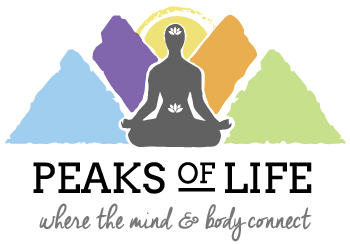This past week I was watching a show and one of the main characters died. It was tragic. It was unexpected. She was young. It got me super emotional. I cried. Yesterday, I was watching the news and there was a story about a dog shelter and how there has been an increase in homeless dogs. I cried. Later in the afternoon, I took my dogs for a walk and I saw a dead bird on the trail. I felt myself wanting to cry – again.
Are you sensing a theme? I am an emotional person. I am a feeler. When I hear or see something sad, I can easily cry, and – it doesn’t have to be about someone I have a relationship with.
In the past, the sadness would take me down, sometimes for a couple of hours, for the rest of the day, or sometimes longer. It was exhausting.
It wasn’t until I realized that I was an empath that things shifted for me. An empath is a person highly attuned to the feelings and emotions of those around them. I’ve heard it described as being an emotional and physical sponge.
That’s what was going on. I was connecting to the feelings and emotions of others. I was absorbing the sadness like a sponge AND making it mine – when it wasn’t.
Can you relate? Do you think you may be an empath? Some questions you can ask yourself are:
- Are you often told that you are overly sensitive, shy, or a super-feeler?
- Do you find you need a lot of downtime or alone time, especially after you have been around crowds?
- Are you sensitive to light, sound, and smells?
- Do you get easily overwhelmed?
- Do you notice your moods change easily and frequently to match the people around you?
If you answered yes to all or most of these, you may have some empathetic tendencies.
I thought I needed to stop myself from being an empath, but that wasn’t going to work. I still wanted to have empathy and compassion for what others are experiencing. However, I needed to learn how to not absorb and take on the sadness of those around me.
My first step was to be aware of when it was happening. When I found myself feeling like I was about to cry or when I was crying I would ask myself, “Why am I sad? Is this my sadness or someone else’s sadness that I am taking on?”
If it was my sadness, I would allow myself to experience it, to be with it. I would check in to see if I needed to cry it out, talk to someone, be alone, journal, meditate, etc.
If it was not my sadness, I would take a couple of deep breaths —- in and out. Breathing in helped to ground me and as I breathed out I imagined my mind and body releasing the sadness that was not mine. Then I would send love and compassion to the person that was experiencing the sadness.
It takes practice, but if you also feel like you may be a sponge to other people’s sadness – I encourage you to check inward, take some deep breaths and give your mind and body permission to let go of the emotions and feelings that are not yours.
You will be amazed at how freeing it can be to no longer be the sponge for other people’s sadness. Instead, you can wrap them in love, peace, compassion, etc.
“As empaths, we are not here to be sponges or enablers. We are here to be helpers, guides, and supporters.” Aletheia Luna

